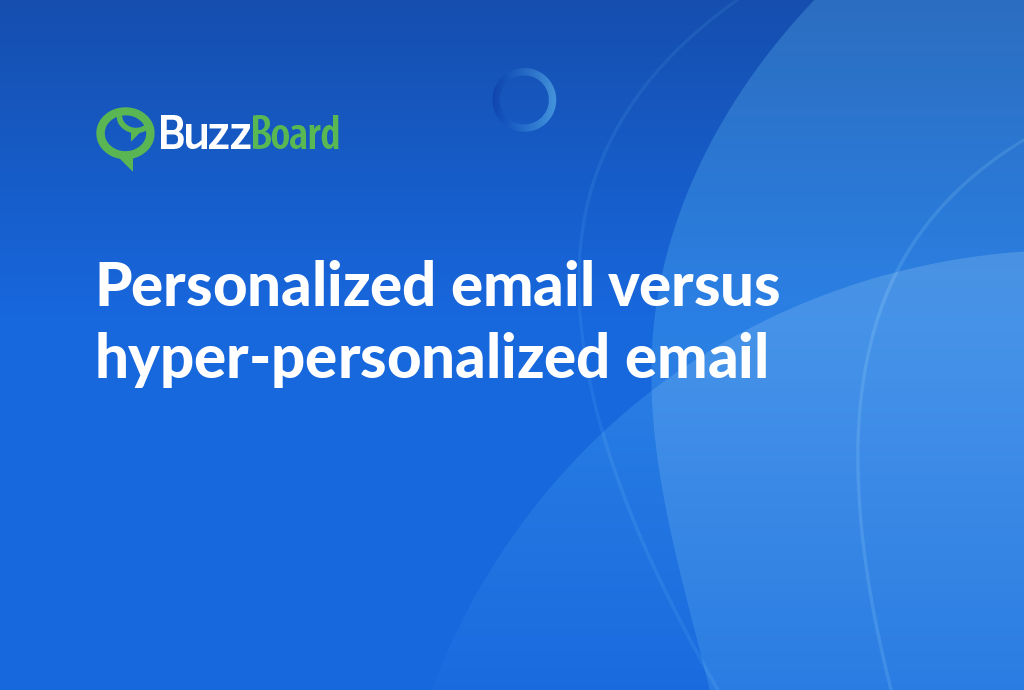Explore the Significant Role of A/B Testing in Email Campaigns for Achieving Better Results
As a digital marketing agency focusing on small and local businesses, email campaigns are a critical key to your success. The secret to ensuring the optimization of your campaigns for the best results lies in A/B testing.
A/B testing is a comparative evaluation of two versions of an email to ascertain which performs better. This powerful testing strategy can boost your email marketing efforts by enhancing your subject lines, email content and overall conversion optimization.
Consider this: You’ve poured countless hours into creating the perfect email for your local business clients. The design is sleek, the content compelling and the call-to-action convincing. You hit send, expecting a flood of positive responses, yet they don’t come. What went wrong?
This highlights the importance of A/B testing. Without testing, you’re essentially operating in the dark. By creating two versions of the email and sending each to a subset of your audience, you can determine which is more effective.
Start with your subject lines. These should be enticing enough to get someone to open your email. Experiment with various formats – does a question outperform a statement, or does a personalized subject line surpass a generic one? Only through A/B testing you will find out.
Next, think about the email content. Experiment with different tones, lengths, and formats. Perhaps shorter emails resonate better with your target audience, or maybe they prefer a more conversational tone. Again, A/B testing can provide this insight.
Remember, the ultimate goal is conversion optimization. The conversion rate is the definitive measure of your email’s success. A/B testing can help you understand what prompts your target audience to act.
Initiating A/B tests might seem formidable initially, but the results can increase open rates, engagement, and conversions, making your email campaigns significantly more effective. It’s an investment in focus that saves you from harder work down the road.
Bear in mind, though, A/B testing is not a one-time process. As your audience evolves, your testing strategies must adapt accordingly. Continuous testing, refining, and optimization will help keep your email campaigns fresh and effective.
Embrace A/B testing as a fundamental part of your email marketing strategy and watch your digital marketing agency flourish in the competitive local business market.
Understand the Parameters for Testing Email Campaigns
In the world of digital marketing, embracing effective strategies to guarantee potential client engagement isn’t merely optional but necessary. This holds particularly true for refining your email campaigns aimed at local business clients.
One tactical method to grasp attention is by crafting compelling email subject lines. Research suggests that the decision to open an email relies on the subject line alone for 35% of recipients. Consequently, attaining optimal subject lines becomes crucial; A/B testing proves to be the most potent tool for this purpose. Utilizing A/B testing allows you to ascertain which subject lines yield higher open rates, thereby sharpening your email campaigns.
Consider, for instance, testing a direct subject line against a more casual, conversational one. Would “20% off our services – Today Only!” perform better than “Hey [Name], don’t miss out on this awesome deal!”? Such questions can only be definitively answered through testing.
The content within the email also needs testing. Does plain text outperform HTML? Is a short email more effective than a lengthy one? Here too, A/B testing proves beneficial. Your agency can explore different variables like email length, graphics versus text, varying call-to-actions (CTAs), and more, thus shaping personalized and efficient local email marketing campaigns.
Ultimately, the goal is to convert these small businesses into service buyers. All elements of your email, from the subject line to CTA, should be directed towards this aim. Testing and tracking fundamental metrics like open rates, click-through rates (CTR), conversions, and more, provide insightful data about campaign performance and areas needing enhancement.
So, initiating test email campaigns targeting local business clients requires perfecting your subject lines, email content, and conversion optimization methods. This approach ensures maximum potential success for every email sent to your client.
Harnessing the Power of Local Email Marketing: A Guide for Digital Marketing Agencies
For digital marketing agencies seeking to establish strong connections with local business clients, local email marketing presents a vast and untapped opportunity to drive conversions and foster long-term relationships. By crafting targeted email campaigns that resonate with the unique needs and concerns of local businesses, agencies can demonstrate their understanding of the client’s requirements, build trust, and establish credibility.
The key to successful local email marketing lies in its ability to present relevant and personalized content that directly addresses the specific pain points and challenges faced by local businesses. This localized approach enables agencies to tailor their messaging, offers, and promotions to the unique needs of each client, increasing the likelihood of engagement and conversion.
One of the most effective strategies for optimizing local email marketing campaigns is A/B testing. By experimenting with varying subject lines, email content, and design elements, agencies can determine what resonates best with their local business clients. This data-driven approach allows agencies to identify the most effective subject lines, email copy, and design elements that drive open rates, clicks, and conversions.
However, A/B testing is not a one-time exercise. Rather, it’s an ongoing process that requires agencies to test each element independently to gain accurate insights. This means testing subject lines, email copy, images, calls-to-action, and other design elements to determine what works best for each client. By doing so, agencies can ensure that every aspect of their email campaigns is optimized for their target audience.
Timing and frequency are also critical components of local email marketing. By tracking when emails are opened most frequently, agencies can identify the best times to reach their clients’ inboxes. This may involve sending emails during peak hours, such as during lunch breaks or early morning, or scheduling emails to coincide with specific events or holidays.
It’s essential to note that local email marketing is not a one-size-fits-all approach. What works for one locality may not be effective for another. Ongoing testing and enhancement are crucial for customizing strategies to meet the unique needs of each locale. This may involve adjusting subject lines, email content, and design elements to better resonate with local businesses, as well as experimenting with different send times and frequencies.
To maximize the effectiveness of local email marketing, agencies should also consider the following best practices:
- Segment email lists to target specific local businesses and industries
- Use location-specific language and imagery to personalize email content
- Include clear calls-to-action and compelling offers to drive conversions
- Monitor and analyze email metrics to identify areas for improvement
- Continuously test and refine email campaigns to optimize performance
By embracing these strategies and best practices, digital marketing agencies can unlock the full potential of local email marketing, build strong relationships with local business clients, and drive conversions and growth.
Test Email Campaigns Targeting Local Business Clients: A Comprehensive Guide for Conversion Optimization
Email marketing remains a high-return-on-investment (ROI) and effective local marketing strategy, particularly suitable for small and medium-sized businesses. However, the primary challenge lies in conversion optimization, which involves testing email campaigns to ensure they reach local business clients in the most efficient and effective manner. By employing A/B testing with diverse subject lines and email content, digital marketing agencies can potentially enhance the conversion rates for small businesses.
A/B testing operates like an experiment, where two slightly different versions of the same email campaign are dispatched to segmented sections of the target audience. For instance, contrasting subject lines can be tested to determine which one resonates better with the audience. By monitoring and comparing the open and click rates between the two, digital marketers can gain a better understanding of what type of content clicks with their audience.
Subject lines, often overlooked, are a pivotal aspect of email marketing. They alone can influence open rates, making them a crucial element to optimize. The most effective subject lines are usually brief, personalized, and action-oriented. A well-crafted subject line can make all the difference in enticing the audience to open the email, while a poorly written one can lead to low open rates and decreased engagement.
The email content itself should be visually appealing, easy to scan, and provide relevant, valuable information. Personalization plays a crucial role in email content, harnessing data insights to deliver targeted content based on the individual user’s behavior. This approach helps to build trust and relevance with the audience, increasing the likelihood of conversion.
A/B testing is undoubtedly a beneficial process, offering valuable insights into what works and what doesn’t. However, it requires effort and understanding to establish and interpret the results. Testing strategies are always evolving, as data, trends, and user behavior can swiftly change in the digital marketing world. Staying updated with the latest techniques and trends is essential to ensure that email marketing campaigns remain effective and relevant.
Through the adoption of these strategies, digital marketing agencies can confidently showcase their email marketing services to small businesses, highlighting the benefits and potential for boosted conversion rates. By emphasizing the importance of A/B testing and personalization, agencies can demonstrate their expertise in optimizing email marketing campaigns for small businesses.
Conversion optimization isn’t a one-off process; it necessitates constant testing and adaptations. This means retesting, even if significant results are yielded, and adjusting marketing efforts based on the most recent findings. The ultimate aim is to supply the finest quality content to the audience, ensuring that it is discovered at the right moment and in the appropriate venue.
As we continue to unravel the complexities of digital marketing, testing and optimization will persist as key elements toward achieving success. By staying up-to-date with the latest trends and best practices, digital marketers can ensure that their email marketing campaigns remain effective and efficient, driving conversions and revenue for small businesses.
In addition to A/B testing and personalization, other strategies can be employed to optimize email marketing campaigns. For instance, segmenting the audience based on demographics, behavior, or preferences can help to deliver targeted content that resonates with each group. Using dynamic content, which allows for real-time updates and personalization, can also enhance the email marketing experience.
Furthermore, incorporating social proof, such as customer testimonials and reviews, can increase trust and credibility with the audience. Using urgency tactics, such as limited-time offers and scarcity, can also encourage conversions. By combining these strategies with A/B testing and personalization, digital marketers can create email marketing campaigns that drive results and exceed expectations.
Ultimately, the key to successful email marketing lies in understanding the audience and tailoring the content to their needs and preferences. By staying focused on the audience and continuously testing and optimizing email marketing campaigns, digital marketers can achieve high conversion rates and drive business growth for small businesses.
Discover How Optimally Testing Your Email Campaigns Can Lead to Successful Marketing Outputs for Local Business Clients
In the dynamic world of digital marketing, understanding and analyzing consumer behavior is vital. This is particularly true when your client base comprises local businesses. The strategies used to test and comprehend your clients can significantly increase conversion rates.
Consider the example of testing email campaigns targeting local businesses. Crafting an engaging email campaign involves more than creating a compelling message. It includes applying A/B tests, formulating engaging subject lines, producing pertinent email content, and utilizing local email marketing tactics.
A/B testing, better known as split testing, involves running two versions of an email to determine which one performs better. You can alter various elements such as the subject lines, email body, or even the time of day the email is sent. The goal is to identify what best resonates with your audience and optimize accordingly.
Subject lines play a critical role in determining whether recipients will open the email or ignore it. Personalizing subject lines based on local preferences can greatly enhance open rates. Another strategy is to test a variety of subject line formats to gain insight into what works best with your local business clients.
Content within the email should be relevant, personalized, and engaging. Understanding the local market and its demands and tailoring your content to meet these needs can significantly increase interaction and conversion rates.
Incorporating local references can reinforce the credibility of your business. Regular testing to monitor changing preferences and trends is also necessary to stay current with evolving strategies.
It’s important to remember that the primary goal of email marketing is conversion optimization. An email’s open rate is a crucial metric, but it’s not the only one. You’re also keen to see if the email prompts the reader to take a desired action. This is where understanding the local market and adapting your strategies can make a big difference.
In conclusion, consistently testing your email marketing efforts will ensure your marketing components are optimized for the best performance. The insights gained through testing will elevate your email campaign, increasing both engagement and conversion rates.









